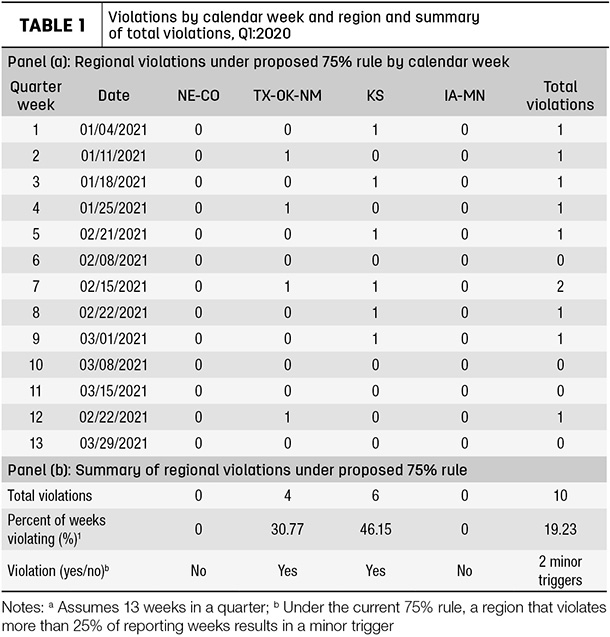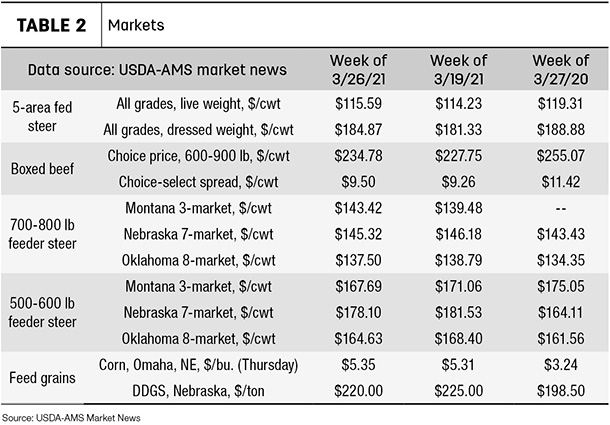Last year, several pieces of legislation were introduced in both the U.S. House of Representatives and Congress whose principal aim was to increase the level of negotiated cash trade. The cattle industry responded to proposed legislation by creating a voluntary framework, known as the 75% rule, that includes cattle feeder and packing plant triggers based on levels of negotiated trade and marketplace participation. The overarching objective is similar to the introduced legislation – to increase the frequency and price transparency in all major cattle feeding and packing regions.
The details and updates to this framework can be found here. To review, the 75% rule framework functions off a series of minor and major triggers. There are eight minor triggers (four cattle feeding and four packer participation). Minor triggers are summed within a quarter and aggregated up from weekly thresholds where three minor triggers equal a major trigger. A major trigger occurring in two of four rolling quarters would prompt the industry to seek legislative action. This policy can be adjusted given updates from literature, industry, and qualifying black swan events or ad hoc events that disrupt the normal beef complex.
This voluntary framework went into effect on Jan. 1, 2021. The end of March represents the first quarter to be analyzed. This article presents the first update on the regional performance of the industry framework as of March 29, 2021. A detailed analysis of the historical performance and potential considerations, from a previous In the Cattle Markets article, can be found here. Each-quarter updates will be made to monitor the current performance of the proposed industry framework and to reflect the most current market conditions.
Packer silos
The packer participation portion of the plan is still under development. The National Cattlemen's Beef Association (NCBA) and the meat-packing industry have not made any further formal announcements about when or what minor triggers will look like.

Feeder silos
A feeding region can fail in any given week; a minor cattle feeding trigger occurs if less than 75% of the robust level of negotiated trade occurs in less than 75% of the weeks in a given quarter. I further assume that a cattle feeding region fails if it is non-reporting due to confidentiality. The four cattle feeding areas are: Nebraska-Colorado (NE-CO), Texas-Oklahoma-New Mexico (TX-OK-NM), Kansas (KS) and Iowa-Minnesota (IA-MN).
In Table 1, panel (a) reports the violations by calendar week by location. Table 1, panel (b) reports the summary statistics of violations in Q1:2021. Violations occurred in nine of the 13 weeks for a total of 10 total violations. The NE-CO and IA-MN regions did not violate any weeks during Q1:2021. The TX-NM-OK region violated four of 13 weeks, and the KS region violated six of the 14 weeks. Under the current proposed 75% rule, both the KS and TX-OK-MN regions would have quarterly violations and thus become minor triggers. Overall, across weeks and locations, 19.23% of location-weeks violated the 75% rule.

Discussion
The industry’s “75% rule” was developed in response to proposed legislation to solve potential concerns about thinness in negotiated trade across different regions. In Q1:2021, two minor triggers would have occurred in the cattle feeding region. The packing region is still under discussion. Two of the largest factors in the policy are the number of weeks required to meet negotiated minimums and the percent of robust trade. In this quarter, the percent of robust trade was less of a concern than the total number of weeks required to meet robust trade minimums.
References omitted but are available upon request by sending an email to the editor.
This originally appeared in the Livestock Marketing Information Center’s March 29, 2021, In the Cattle Markets newsletter.




